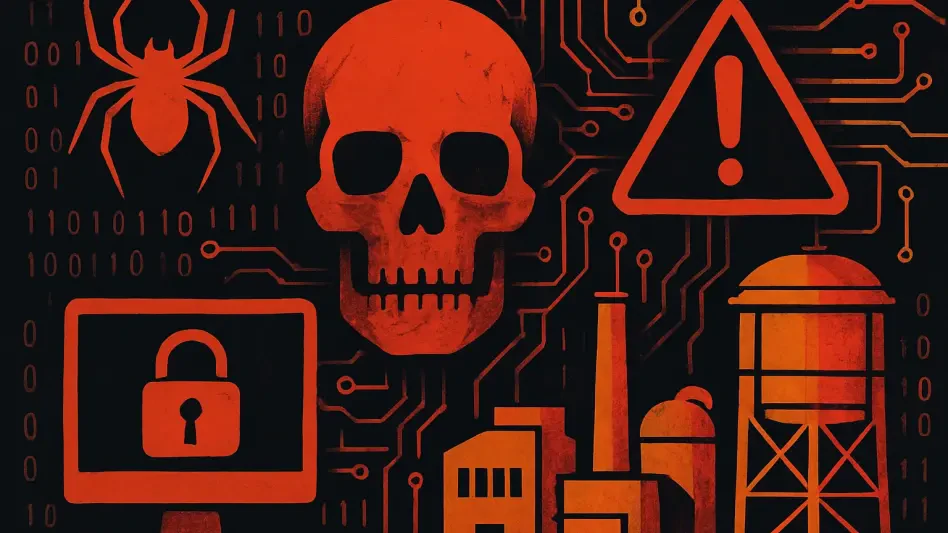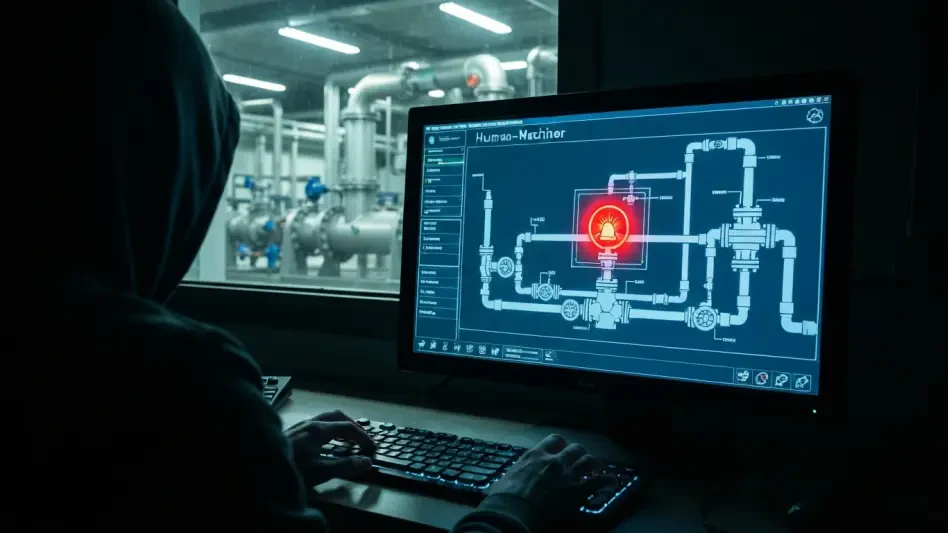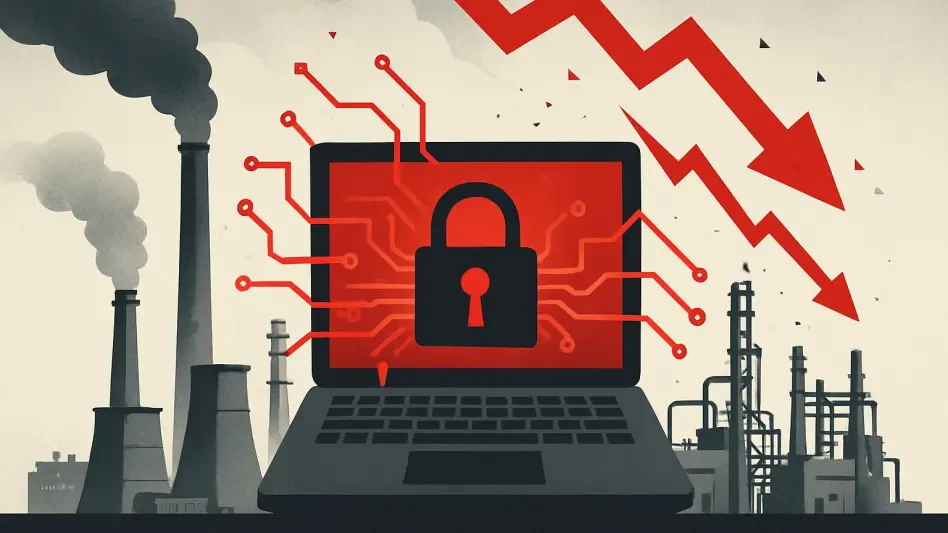In a landscape where critical infrastructure underpins the very foundation of modern society, the recent alerts from the Cybersecurity and Infrastructure Security Agency (CISA) serve as a sobering wake-up call for industries reliant on industrial control systems (ICS). These systems, vital to sectors like Energy, IT, Transportation, and Manufacturing, are now under scrutiny due to severe vulnerabilities that threaten operational stability and national security. CISA’s latest advisories highlight flaws in widely used products, raising concerns about potential remote exploits that could disrupt essential services or even cause physical harm. The urgency to address these issues cannot be overstated, as the consequences of inaction could ripple across multiple sectors, impacting everything from power grids to transportation networks. This discussion delves into the specifics of these vulnerabilities, the affected technologies, and the broader implications for industrial cybersecurity, emphasizing the critical need for immediate and comprehensive action to safeguard vital systems.
Unveiling the Vulnerabilities in ICS Products
The scope of the vulnerabilities identified by CISA is both extensive and alarming, spanning multiple products integral to critical infrastructure operations. Specifically, nine flaws have been uncovered in INVT’s VT-Designer and HMITool software, with severity scores reaching 8.5 on the CVSS v4 scale. These issues, rooted in memory-corruption and type-confusion errors, could allow attackers to execute arbitrary code with elevated privileges if user interaction is exploited. Similarly, Schneider Electric’s Modicon M340 controllers are at risk due to buffer overflows and inadequate access controls, boasting a critical CVSS v4 score of 9.1. Such flaws enable remote attackers to manipulate configurations or execute unauthorized code, posing significant threats to system integrity. Additionally, Danfoss AK-SM 8xxA Series drives exhibit vulnerabilities like authentication bypass, with CVSS v3.1 scores up to 9.0, potentially allowing remote monitoring or alteration of drive parameters. The diversity of these flaws underscores the pervasive risks embedded in ICS environments.
Beyond the technical details, the potential impact of these vulnerabilities on operational continuity cannot be ignored. Exploitation of these flaws could lead to severe disruptions in essential services, compromising everything from energy distribution to manufacturing processes. A successful attack on these systems might not only result in financial losses but also endanger public safety through physical damage or system failures. The high severity scores associated with these vulnerabilities reflect their capacity for remote exploitation, amplifying the urgency for mitigation. CISA’s identification of these issues across different vendors highlights a systemic challenge within ICS technologies, where interconnected systems increase the attack surface. Asset owners and operators must recognize that the stakes are extraordinarily high, as the cascading effects of a breach could affect multiple sectors simultaneously, necessitating a robust and immediate response to secure these critical systems from malicious actors.
Mitigation Strategies and Industry Implications
Addressing these critical vulnerabilities demands a multifaceted approach, as outlined in CISA’s comprehensive guidance. Vendors have already taken steps to mitigate risks, with Schneider Electric releasing firmware updates to version 2.3.5-B or higher for Modicon M340 devices, and Danfoss issuing patch 1.12.0 for AK-SM drives. However, applying patches alone is insufficient to ensure security. CISA strongly advocates for network segmentation to limit exposure, alongside the implementation of firewall isolation and VPN hardening to protect against unauthorized access. Strict access controls and adherence to least-privilege policies are also recommended to minimize potential damage from compromised accounts. These measures collectively aim to reduce the attack surface of ICS environments, ensuring that even if one component is breached, the broader system remains insulated from widespread disruption. The emphasis on proactive security reflects an industry-wide acknowledgment of the evolving threat landscape.
The broader implications of these advisories extend far beyond immediate technical fixes, signaling a pressing need for a cultural shift in how cybersecurity is prioritized within industrial sectors. The prevalence of remotely exploitable flaws in ICS components reveals a troubling trend of vulnerabilities that can have catastrophic consequences if left unaddressed. This situation calls for heightened collaboration between vendors, asset owners, and regulatory bodies to establish more resilient security frameworks. The diversity of affected sectors—ranging from energy to transportation—illustrates the interconnected nature of critical infrastructure and the potential for widespread impact from a single exploit. By adopting CISA’s recommendations, organizations can not only address current threats but also build a foundation for long-term security. Looking ahead, the focus must remain on continuous monitoring, regular updates, and investment in advanced threat detection to stay ahead of emerging risks in an increasingly digital industrial landscape.
Strengthening Defenses Against Evolving Threats
Reflecting on the urgency of CISA’s warnings, it becomes evident that the battle to secure industrial control systems demands swift and decisive action from all stakeholders. The detailed advisories pinpoint severe vulnerabilities in products from INVT, Schneider Electric, and Danfoss, each posing unique risks that could derail critical operations if exploited. The response from vendors with timely patches is a crucial first step, yet the broader adoption of security best practices proves equally vital in fortifying defenses. Asset owners are urged to prioritize network isolation and rigorous access controls to prevent unauthorized intrusions. Monitoring for exploit attempts emerges as a key tactic to detect threats before they escalate.
Moving forward, the path to enhanced security lies in sustained vigilance and proactive measures. Organizations must commit to regularly updating systems with vendor-supplied patches while investing in training to ensure staff are equipped to handle emerging threats. Exploring resources on CISA’s ICS webpage offers valuable insights into best practices tailored for industrial environments. Collaboration across sectors will be essential to share threat intelligence and develop innovative solutions, ensuring that critical infrastructure remains resilient against the ever-evolving landscape of cyber threats.








